A mixer is an essential piece of gear for anybody who streams.
They allow you to process and control your audio on the fly with various faders or knobs.
Additionally, most modern mixers include a host of other features and functionality that go far beyond that… ## What Is the Best Audio Mixer for Streaming?
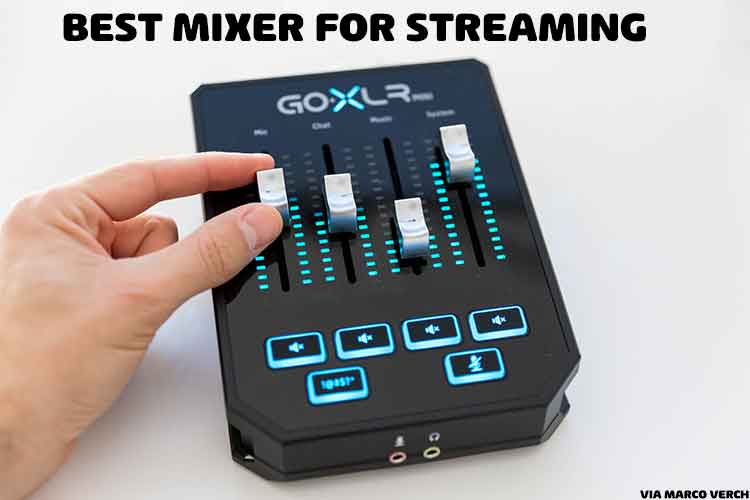
Roland GO:MIXER PRO-X
No.
The gear itself has eleven inputs in total.
Additionally, four are input connections.
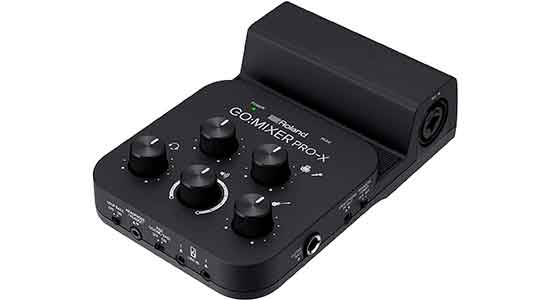
They include two stereo line inputs, a TRRS four-pole jack, and a micro USB port.
For audio gear, the PRO-X is ideal for connecting things like keyboards, DJ controllers, or guitars.
The signal is then sent to your favorite streaming platform upon going live.
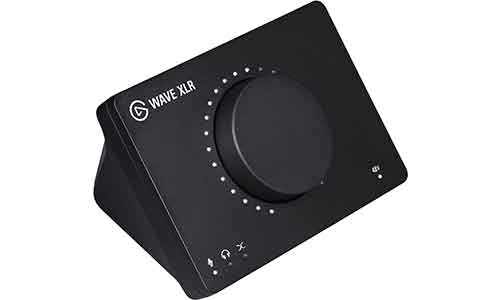
Five dials on the top of the equipment make it easy to adjust the gain of each audio signal.
This is necessary if you want to run a condenser mic off 48V phantom power.
Surprisingly, the PRO-X packs plenty of gain to power most dynamic microphones and instruments.
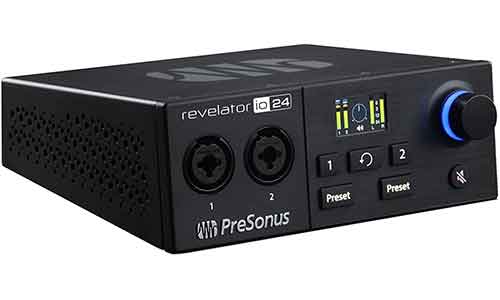
As a result, you wont have any concerns or complaints In this regard.
Obviously, with a equipment this small there are a few cons.
For starters, theres no way to adjust microphone EQ or compression on the gadget itself.
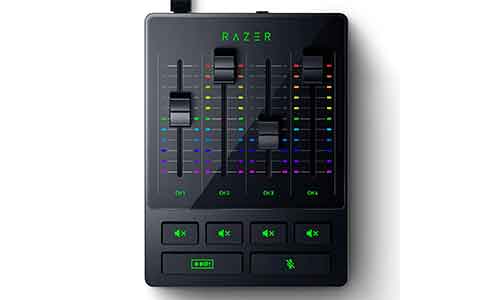
Moreover, the headphone output is lacking its own gain.
Due to this, you may need to attach a headphone pre-amp in noisy environments.
All in all, GO:MIXER PRO-X is the best audio mixer for live streaming on your phone.
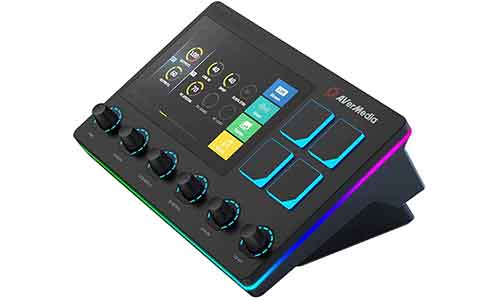
Its perfect for IRL streamers, musicians, and video makers wanting to up their production quality remotely.
Elgato Wave XLR
No.
Additionally, it allows all types of microphones to benefit from the powerful Wave Link software.

The actual design of the equipment is relatively simple.
Moreover, on the top is a tap-to-mute capacitive sensor.
Then, theres a giant multi-function knob on the front.

Switching between channels involves giving the knob a quick press, which subsequently lights up its LED indicator below.
Alternatively, a long press will turn on/ off phantom power.
Another huge selling point of the Elgato Wave XLR is the functionality of its software.
This makes controling your in-game chat volume levels a breeze.
Most mixers have a reputation of being overly complicated and generally too much for peoples needs.
However, this isnt the case with the Wave XLR.
It works as a plug-and-play solution thats simple to set up.
As a result, its ideal for those who fancy a quick, spontaneous stream.
Admittedly, there are a few cons to the Wave XLR too.
Moreover, unlike the GoXLR Mini, it is lacking a line-in/ out.
Therefore, its not suitable for dual PC setups.
It provides studio-grade audio quality and only takes up inches of space on your desk.
Presonus Revelator IO24
No.
These features include virtual routing, a loopback mixer, and podcasting effects.
In terms of the design, the IO24 is sleek and clean in its presentation.
All buttons are backlit and the main dial has a subtle blue ring of LED lighting.
Input and outputs are on both sides of the equipment.
Moreover, in the middle is an LCD screen.
This provides useful information about the inputs you select.
The rest of the inputs and outputs are on the back.
Although the essential I/Os are there, admittedly it is lacking auxiliary and optical inputs for certain streaming situations.
As for the rotary encoder, this has two functions.
The integrated DSP mixer (with a fat channel) is where all the magic happens.
TC-Helicon GoXLR Mini
No.
However, it retains its high-quality preamps, onboard processors, and exclusive software.
Additionally, theres a mic mute button and a bleep button.
The rest of the I/Os are on the rear.
All you need is a couple of 3.5mm cables to get everything up and running.
Alternatively, it’s possible for you to use these inputs for connecting to another GoXLR.
The software gives you almost the same level of control over your audio as its larger brother, too.
On the mic tab, theres a noise gate, compressor, and EQ prefs.
Currently, the GoXLR Mini is the best budget audio mixer for streaming.
It features the most useful bits from the full-size GoXLR at less then half the price.
Razer Audio Mixer
No.
The bevels arent quite as chunky and the footprint is roughly 10% more compact.
Due to this, it takes up less space on the desk, which some people might prefer.
Much like the GoXLR Mini, the interface consists of four-volume slide faders and six buttons beneath.
The buttons include four-channel-mute buttons, a mic mute button, and a bleep button.
Apart from the mute/ beep buttons being almost double the size, theres not much difference here.
Theres not much difference in the I/Os, either.
On the front of the unit is a powered 3.5mm headphone jack.
The only two updates to the rear are a dedicated phantom power button and a USB pop in-C port.
Unlike the GoXLR Mini, the microphone mute button does have a special trick.
Holding this down for two seconds activates the pre-configured voice changer effect.
All voice changer effects and EQ prefs are customizable from within the Razer software.
Here you could choose from four preset prefs including Cartoon, Monster, etc., or make your own.
you’re free to then program that effect to the mute button turning it into a one-button soundboard.
The softwares RGB customization is another quirk you wont find on the GoXLR Mini.
This provides an opportunity to personalize the colors of the channels as well as the mute buttons themselves.
Personally, we quite like this as makes it that much easier to identify your channels and actions.
Of course, the Razer software gives you full control over your channel mapping and microphone tweaks too.
On the whole, the Razer software is not bad but the GoXLR software is a bit more polished.
We have to say that the audio quality between the two units is indistinguishable.
For specs, youre looking at a 10 Hz to 20 kHz frequency response and a 110dB Dynamic Range.
For budget streaming, the Razer Audio Mixer competes head to head with the GoXLR Mini.
AVerMedia Live Streamer NEXUS
No.
Unfortunately, the stand is non-adjustable so you could only lock the angle into two viewing positions.
Nevertheless, this shouldnt really be an issue for most people.
A five-inch IPS screen with a CTP touch panel takes up most of the interface.
Physically, the touchpads do feel a little cheap.
For instance, they dont depress evenly and instead sort of lean towards the direction you press them.
However, the audio dials are much better.
They have a nice, firm click and pleasing tactility as they adjust in increments of five.
In contrast to the audio dials, the IPS screen and function buttons are fully customizable.
Using the Nexus app, its possible to personalize them as you like.
One of the biggest benefits of the IPS screen is the ability to use it as an actual screen.
This is especially useful for gamers streaming from a single monitor.
Additionally, it supports dual independent audio mixes for the creator/ audience.
As a result, you could fine-tune your levels and EQ options in an optimal way.
In terms of audio, the Live Streamer sounds great (not distorted, or with static).
Moreover, to amplify XLR mics youll be glad to know that +48V phantom power is present.
Finally, all I/Os are on the back of the rig.
Having the 3.5mm ports instead of L/ R jacks is ideal for non-professional streamers.
That means it’s possible for you to use consumer headphones and mics without adapters.
Tascam Mixcast 4
No.
Apart from that, the interface does feature a few extra useful buttons.
In addition, Tamcast has included a Talkback button for sending non-recorded instructions to guests.
The inputs and outputs on the back of the equipment dont stray too far either.
A nice upgrade though is that the mic inputs instead use combo jacks.
In particular, it uses more plastic and the pads dont feel quite as nice.
On the plus side, the Mixcasts LCD provides updated functionality.
To help guide you through the recording process, the menus are clearer.
The Tascams podcast editor software offers a complete solution.
Additionally, it allows you to split waveforms, combine takes, and add fades etc.
Finally, in terms of power and audio quality, this is comparable.
However, we do think that the built-in Aphex audio processing does sound marginally better on the RODECaster Pro.
Overall, the Tascam Mixcast 4 is a fantastic control center that works wonders for podcasts.
Established Twitch streamers and YouTubers who regularly do interviews can really benefit from this feature-rich audio mixer.
Rode RODECaster Pro
No.
Four of the channels are for high-quality XLR mic channels.
Two channels are for connecting mobile devices via a TRRS jack and Bluetooth.
One channel is a class-compliant USB interface for playing back audio from your PC.
Lastly, one channel controls the volume of the sound pads.
The two channels for connecting mobile devices (e.g.
a phone, tablet, etc.)
are particularly useful for broadcasting without a PC.
They allow you to bring in music/ audio from other devices straight into your podcast.
Additionally, they provide an easy way to bring voice calls in to the podcast via apps.
The five dials include four volume controls for headphones and a master volume control for speaker inputs.
After selecting the XLR mic channel that you want to adjust, simply head into the interactive menu.
From here, you might tweak the compression and turn on several audio features.
They come with a bunch of preset effects, but adding new ones is also a breeze.
We like that the audio features include Aphex Aural Exciter and Big Bottom.
Moreover, Big Bottom gives some extra punch and depth to the bass.
The features work spectacularly on voice recordings and allow you to start your stream with minimal fuss.
Furthermore, the audio quality sounds crystal clear, and the preamps have plenty of power, too.
With 55dB of gain range, it has no issues powering hard-to-drive mics like the Shure SM7b.
Overall, the RODECaster Pro is a highly capable piece of gear with a fantastic design.
The functions include a multi-channel mixer, an FX voice changer, and a sampler.
The multi-chancel mixer includes four assignable faders with associated LED screens above and mute buttons below.
We especially like that all of the sliders are motorized.
As a result, any adjustments from within the control center software automatically adjust to their correct position.
), three buttons for pre-installed effects, and an FX on/ off button beneath.
If youre wondering what the pre-installed effects are, these include Microphone, Robot, and Hard Tune.
The next section on the bottom right of the interface is the playback sampler.
Here youll find four buttons in the shape of a square with a clear button in the center.
Youll be glad to know that the playback sampler is incredibly easy to use.
The channel mixer tab is just as simple to use.
The gain sounds nice and clean with little to no preamp noise until you are basically at the maximum.
As a result, it replaces the need for a Cloudlifter or a similar pre-amp equipment.
Finally, the GoXLR has a whole host of inputs and outputs on the back of the unit.
Additionally, theres a USB input and an optical input for use with an external gaming console.
However, if youre a podcaster or Youtuber, we would instead recommend one of the previous two options.
What is an Audio Mixer for Streaming?
Audio mixers combine multiple audio sources into a single signal.
Many mixers also feature their own powerful software that extends the functionality.
Mixers used for streaming give you full control over multiple audio feeds, such as background music or gameplay.
The same EQ and mute tweaks can be applied to microphones, too.
Mixers come in analog and digital versions, and you could use either one for streaming.
Analog mixers only one function per control and feature fewer buttons and dials.
Their simplistic design attracts many beginner streamers.
A digital audio mixer offers multiple functions per control, and usually has more connectivity features and customization options.
Why Do Streamers Use Mixers?
Sound plays a major role in the effectiveness of a stream.
Modern mixers may also feature FX voice effects controls and onboard soundboards that help them achieve this.
Mixers control the level of sound coming from different devices.
For example, reducing things like background music so their viewers can only hear their narration.
This ensures that the stream maintains a certain audio balance without adjusting what the streamer hears.
Mixers keep all these controls close as hand, too.
A streamer can easily mute a microphone with a push of a button.
Most mixers pair seamlessly with streaming software like OBS or Streamlabs.
The best mixers even include their own software that extends the functionality of the mixer.
This is where you would fine-tune the EQ parameters and compression of your audio inputs.
Some mixers provide sub-mix functionality built into their software, as well.
Instead, choose one that meets your specific needs while offering you room for growth.
Channel Count
The channels of a mixer refer to the different signal paths that your audio travels.
Each source of sound should have its own channel.
Mixers with a greater number of channels cost more, but you dont need many for streaming.
Power
Power is not a major concern unless you use an XLR/ condenser microphone while streaming.
These devices rely on high levels of gain and 48V phantom power that come from the preamp.
Ensure that the audio mixer is capable of providing appropriate phantom power to your condenser microphone.
In most cases, 48V will suffice.
Inputs/ Connection Types
ensure your mixer has input sockets that suit your audio equipment.
This includes USB ports, XLR sockets, 3.5 mm jacks, and even Bluetooth capabilities.
Ensure that the mixer you choose for streaming has an adequate number of appropriate ports for your devices.
Check into the preamp specifications of the mixer before settling on a specific model.
The preamp boosts low-level frequencies without causing distorting, bringing everything to the same base level.
While most modern mixers feature a built-in preamp, they dont all meet the same standards.
You want to ensure the quality or consider using an external preamp.
Size
Check the dimensions of the mixer to ensure it will fit comfortably on your desk.
Your audio mixer should sit nearby so you might adjust the audio during your stream.
We hope you found an audio mixer for streaming on this list.
Click herefor the 13 best GoXLR Alternatives!
Click herefor the best Laptops for Streaming!
Image credit:
Photo by Marco Verch on Unsplash